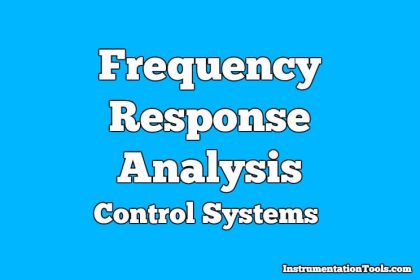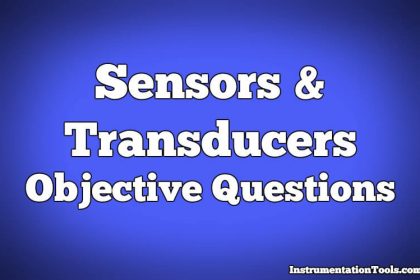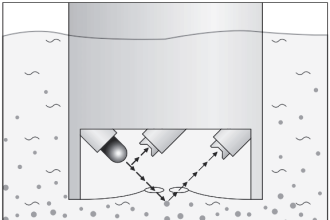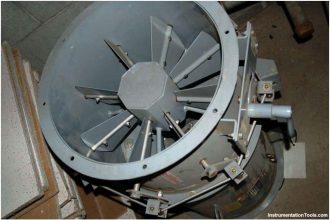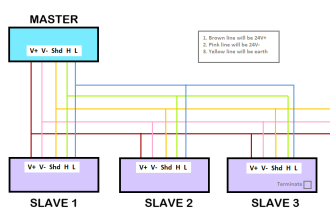Effect of Adding a Zero to a System – II
1. Which of the following can be measured by the use of a tacho-generator?
a) Acceleration
b) Speed
c) Speed and acceleration
d) Displacement
Answer: b
Explanation: Tacho generator is used to measure the velocity or relative velocity of the system.
2. _____________ is not a final control element.
a) Control valve
b) Potentiometer
c) Electro-pneumatic converter
d) Servomotor
Answer: b
Explanation: Potentiometer among all the options cannot be the final control element as this is responsible to get the output in measurable form.
3. Which of the following is the definition of proportional band of a controller?
a) The range of air output as measured variable varies from maximum to minimum
b) The range of measured variables from set value
c) The range of measured variables through which the air output changes from maximum to minimum
d) All of the mentioned
Answer: c
Explanation: Proportional band controller is the range of measured variables through which the air output changes from maximum to minimum.
4. In pneumatic control systems the control valve used as final control element converts
a) Pressure signal to electric signal
b) Pressure signal to position change
c) Electric signal to pressure signal
d) Position change to pressure signal
Answer: b
Explanation: In pneumatic control systems the control valve is used as the final control element to convert pressure signal to position change.
5. Pressure error can be measured by which of the following?
a) Differential bellows and strain gauge
b) Selsyn
c) Strain gauge
d) Strain gauge and potentiometer
Answer: a
Explanation: Pressure error can be measured by differential bellows and strain gauge.
6. Assertion (A): Feedback compensation is preferred to series compensation.
Reason (R): No amplification is required as the energy flows from higher to lower levels.
a) Both assertion and reason are true and R is correct explanation of A
b) Both A and R true but R is not correct explanation of A
c) A is true but R is false
d) A is False but R is true
Answer: a
Explanation: Feedback compensation is preferred to series compensation or cascade compensation because:
In a feedback compensator energy transfer is from higher to a lower one thereby obviating the need for the feedback amplification.
7. Assertion (A): A PI controller increases the order of the system by units but decreases the steady state error.
Reason (R): A PI controller introduces a pole at either the origin or at a desired points on the negative real axis.
a) Both assertion and reason are true and R is correct explanation of A
b) Both A and R true but R is not correct explanation of A
c) A is true but R is false
d) A is False but R is true
Answer: a
Explanation: I is proportional +integral controller. Thus integral controller add a pole either at origin or at the desired point on the negative real axis, so order of the system gets increased but it reduces the steady state error of the offset error.
8. Assertion (A): A derivative controller produces a control action for constant error only.
Reason (R): The PD controller increases the damping and reduces the peak overshoot.
a) Both assertion and reason are true and R is correct explanation of A
b) Both A and R true but R is not correct explanation of A
c) A is true but R is false
d) A is False but R is true
Answer: d
Explanation: The integral control action produces a control action for error constant not derivative controller. A derivative controller improves the transient state of the control system apart from increasing the bandwidth, overshoot and rise time.
9. A plant is controlled by a proportional controller, if time delay element is introduced in the loop its:
a) Phase margin remains the same
b) Phase margin increases
c) Phase margin decreases
d) Gain margin increases
Answer: c
Explanation: When a delay element is introduces in a control system, it only affects the phase margin of the system and new value of the phase margin is decreased.
10. Assertion (A): Lead compensation is used to improve the system’s stability
Reason (R): Lead compensation achieves the desired result through the merits of its phase lead contribution.
a) Both assertion and reason are true and R is correct explanation of A
b) Both A and R true but R is not correct explanation of A
c) A is true but R is false
d) A is False but R is true
Answer: a
Explanation: A lead compensator provides a better gain margin by introducing a positive shift in the phase plot and thus increasing the phase crossover frequency. Thus the system becomes comparatively more stable by using a lead compensator.




